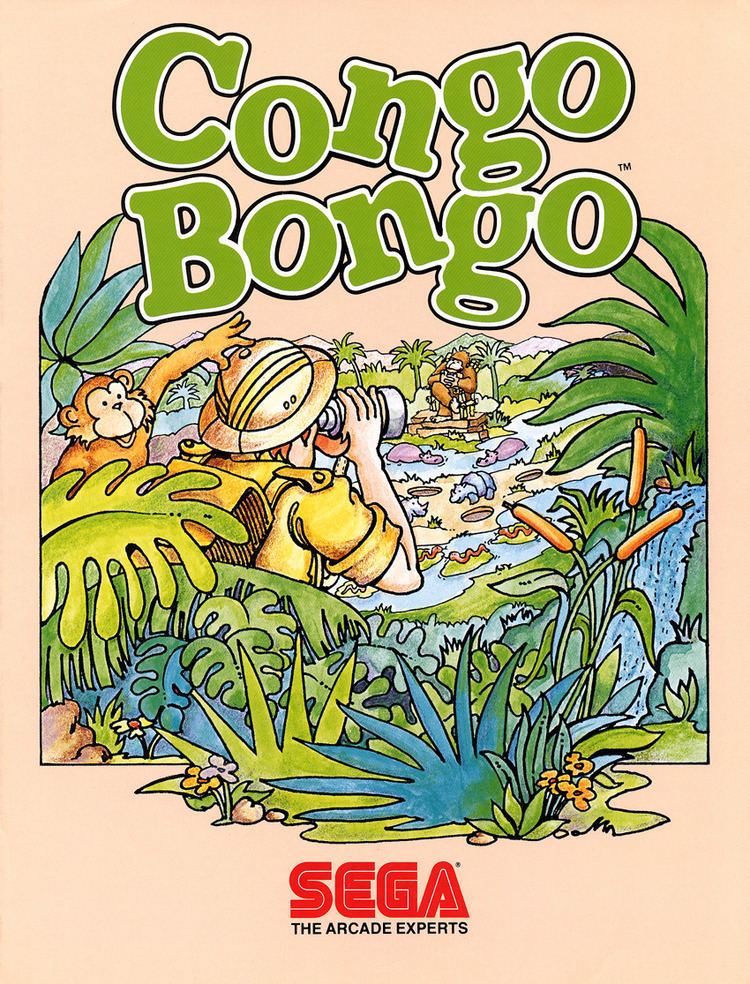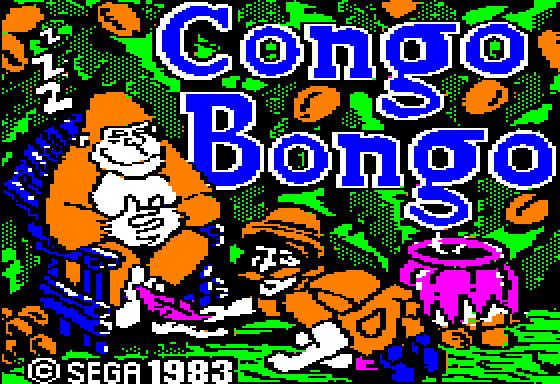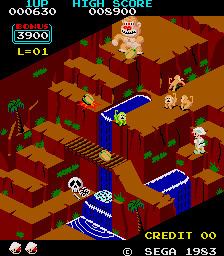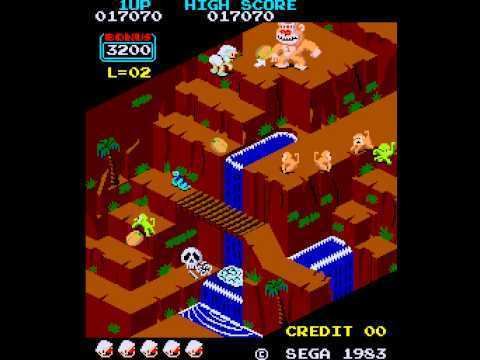8 /10 1 Votes
Release date(s) March 12, 1983 Cabinet Upright | 4/5 Emuparadise Genre(s) Isometric platformer Initial release date 1983 | |||||||||||||||||||||||||||||||||
 | ||||||||||||||||||||||||||||||||||
Mode(s) Up to 2 players, alternating turns Arcade system Z80 CPU @ 3.072 MHzZ80 CPU @ 2 MHzSN76489 audio @ 4 MHz Display Raster, standard resolution (Used: 256 x 224 / Vertical) Palette Colors 256 Similar Coleco games, Platform games | ||||||||||||||||||||||||||||||||||
Arcade game congo bongo 1983 sega
Congo Bongo (コンゴボンゴ, Kongo Bongo), also known as Tip Top (ティップタップ, Tippu Tappu), is an isometric platform arcade game released by Sega in 1983. The player takes the role of a red-nosed safari hunter who tries to catch an ape named Bongo. The hunter seeks Bongo to exact revenge for an apparent practical joke in which Bongo set fire to the hunter's tent, giving him a literal "hot foot." The game was named by Peter W. Gorrie who was the CFO of Sega at that time.
Contents
- Arcade game congo bongo 1983 sega
- Congo bongo 1983 sega mame retro arcade games
- Gameplay
- Reception
- Ports and legacy
- References

The game's ROM contains a message indicating it was likely coded at least in part by the company Ikegami Tsushinki.

Congo bongo 1983 sega mame retro arcade games
Gameplay

Congo Bongo's gameplay is similar that of Donkey Kong and Frogger, but levels are viewed in an isometric perspective, or oblique perspective in some ports. The protagonist has no offensive abilities and must move or jump to avoid enemies and obstacles to complete a level.
In the first level, the player must avoid coconuts thrown by Bongo and climb up a series of cliffs to reach him, while at the same time shaking off monkeys that try to throw the hunter off the mountain. In the second, the player crosses a swamp by riding on the backs of swimming hippopotamuses and dodging snakes and scorpions. The third level requires the player to cross a plain and duck into holes to avoid charging rhinoceroses, while the fourth involves a second swamp crossing on lily pads, fish, and hippos.
If the player completes all four levels, the hunter gives the sleeping Bongo a hot foot in retaliation for the prank Bongo played on him, and the game begins again with increased difficulty.
Reception
Ahoy! in 1984 stated that Congo Bongo for the Commodore 64 and VIC-20 "is fraught with problems; gameplay is repetitive, frustrating, tedious, inconsistent, and at times confusing, and the music not only got on my nerves but stomped on them. Plus, the whole thing is derivative". In 1984 Softline readers named the game the worst Atari program of 1983.
Ports and legacy
Despite being a commercial failure when it was initially released Congo Bongo has been ported to nearly every major gaming platform of the day, including SG-1000, MSX, Intellivision, ColecoVision, Commodore 64 (twice - by Sega in 1983 and by U.S. Gold in 1985), IBM PC, Atari 2600, Atari 5200, Atari 8-bit computers and the Texas Instruments TI-99 4/A. Sega's ports for the Atari 2600, 5200, 8-bits and the Commodore 64 featured only two of the four levels from the arcade original, while the ColecoVision release is missing the level "Snake Lake." The Intellivision port features all 4 of the game's original levels.
An emulated version of the original arcade release is featured as an unlockable in the PlayStation Portable version of the Sega Genesis Collection (Sega Mega Drive Collection in PAL regions). This version was also featured in Sonic's Ultimate Genesis Collection (Sega Mega Drive Ultimate Collection in PAL regions) for Xbox 360 and PlayStation 3. An enhanced remake was released for the PlayStation 2 under the Sega Ages label as Sega Ages 2500 Vol 23: Sega Memorial Collection.
